Since the financial crisis of 2008-2009, the value of many Swarovski crystal figurines, as well as other popular collectibles has gradually declined, leaving collectors and investors curious about the reasons. Although there isn’t a single answer to this question, the following factors have contributed to this drop in value:
- Economic Downturn in 2008-2009
- Reduced demand (as baby boomers get older)
- Increased supply (over-production by Swarovski)
- Increased accessibility (on eBay & online markets)
Limited editions have kept their value or appreciated but increased supply & reduced demand have lowered the resale prices of most Swarovski crystal figurines.
Economic Downturn 2008-2009
A primary factor influencing the decrease in the value of most collectibles was the economic downturn that followed the 2008-2009 financial crisis. As many individuals faced financial difficulties, the demand for luxury items such as collectibles naturally diminished. Additionally, many investors were forced to sell collectibles in order to cover financial losses.

The Impact on collectibles
The impact of the economic downturn was felt across the collectibles market, affecting everything from stamps and coins to art and antiques. The value of many collectibles fell sharply, and some items that had previously been considered highly desirable became much less sought after.
One of the most significant factors contributing to the decline in the value of collectibles was the decrease in demand. As people had less money to spend, they were less likely to invest in non-essential items like collectibles. This led to a glut of items on the market, which further pushed down prices.
Another factor was the decline in the value of the US dollar. Many collectibles are priced in US dollars, and as the value of the currency fell, so too did the value of these items. This made them less attractive to international buyers, who were also affected by the economic downturn.
Overall, the economic downturn of 2008-2009 had a significant impact on the value of collectibles. While some items have since recovered, many have not, and the market remains volatile. Investors looking to buy collectibles should be aware of these factors and take a cautious approach.
As one of the most popular collectibles, Swarovski figurines have suffered similar declines in prices to those experienced by the market in general. The financial crisis was the straw that broke the camel’s back in the collectibles marketplace.
Supply and demand
Every student of economics understands that the value of a commodity depends on the balance between SUPPLY & DEMAND. This is especially true with collectibles, like Swarovski crystal figurines, where supply has risen and demand has fallen in recent years.
The reduction in demand is due to:
- Increasing age of traditional collectors
- Reduced interest from younger generations
- Changing trends toward minimalism
- Increased popularity of digital collectibles (NFTs – non-fungible tokens)
Artistry in Glass is not endorsed, sponsored, licensed by, or affiliated with Swarovski AG in any way. Follow this link to reach the official Swarovski website.
As an Amazon Associate, I earn from qualifying purchases
The increasing aging of collectors
The collector community is experiencing significant changes as the baby boomer generation gracefully ages. Many of these collectors, now in their retirement years, are gradually losing interest or facing financial constraints that make them less active in the market.
Boomers, getting ready to downsize into retirement communities, are finding that their children and grandchildren are not interested in crystal and collectibles.
Many Gen X, Y, and Zs prefer to eat from paper plates rather than fine china!
Reduced interest from younger generations
Another important factor contributing to the decline in collectible values is the lack of enthusiasm among younger generations. Today’s youth tend to prioritize digital collectibles, video games, and exciting experiences over physical objects. Plus, they may not feel the same strong emotional attachment to tangible items that previous generations did, which makes them less likely to engage in collecting.
So, these two factors -the changing interests of retirees and the shifting preferences of younger generations – are causing waves in the collectibles market. It’s a fascinating evolution that’s reshaping the landscape of what people collect and what holds value.
Minimalism
Minimalism is a concept that focuses on simplicity, functionality, and clean lines. It embraces the idea of “less is more” and aims to create spaces that are serene, and visually appealing.

Large numbers of collectibles do not fit into the modern design trend of minimalism that emphasizes simplicity, clean lines, and uncluttered spaces.
Digital collectibles
Since the financial crisis of 2008-2009, there has been a significant shift towards digital collectibles, which has contributed to the fall in the value of traditional collectibles. With the advent of digital technology, people are now able to collect and trade digital assets that can be easily stored, shared, and transferred.
Digital collectibles, also known as non-fungible tokens (NFTs), are unique digital assets that are stored on a blockchain. The blockchain is a decentralized ledger that records all transactions and ensures that each NFT is unique and cannot be duplicated or replicated.
NFTs have become increasingly popular in recent years, with many artists and musicians using them to sell their work directly to fans. These digital assets can take many forms, including digital art, music, videos, and even tweets. The value of NFTs is determined by supply and demand, with some selling for millions of dollars.
Increased supply – overproduction
Artistry in Glass has described the development of the Swarovski figurine business from its humble start in 1976 when Max Schreck glued together chandelier parts to create the iconic mini-mouse,

In order to cash in on their great success with crystal figurines, the Swarovski company has relentlessly released new designs and variations in increasing numbers in recent years. The result (in the opinion of the author) is that only the rarest items (generally limited editions) have retained or increased in value.
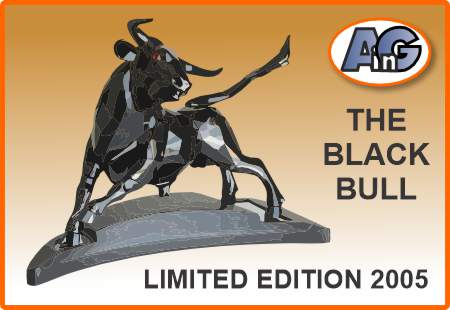
A classic example is the Black Bull, issued in a limited edition of only 1000, which now commands prices in excess of $10,000 when in mint condition with box and COE (certificate of authenticity).
Limited editions still hold their value
Rare items have retained their value as this price summary for Annual ornaments shows:
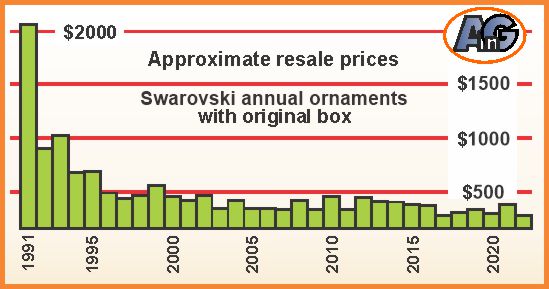
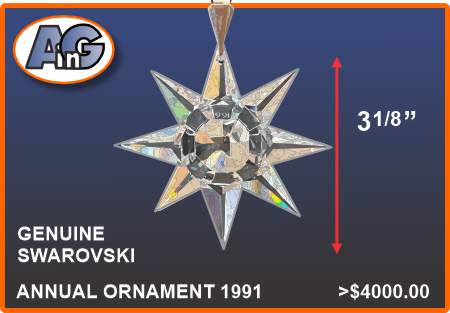
Swarovski constantly expanded its product line to increase sales. The company licensed popular figures from Disney and Pixar as well as designing its own line of original figurines like the inexpensive and very popular “Lovlots” collection:

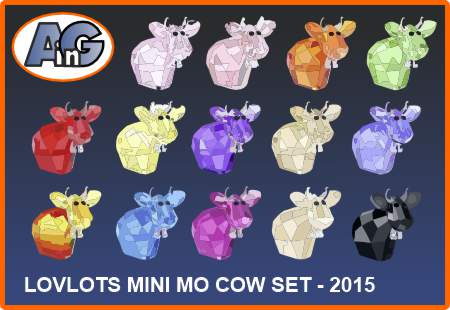
There is no way to prove this theory, but it seems likely to Artistry in Glass that the flattening out and decline in Swarovski prices (except for rare and limited editions), is likely to be partly to excess production motivated by the desire to increase sales.
Wider availability of replicas
The wider availability of replicas has also contributed to the fall in the value of collectibles. With high-quality replicas now readily available, collectors are less likely to pay a premium for authentic items. This has led to a decrease in demand for authentic collectibles, further driving down their value.
Budget-conscious collectors can save money by purchasing cut-price imitations like this Christmas snowflake from the Erwei company. To the inexperienced collector these “knock-offs” look very attractive.
Genuine Swarovski Annual Ornaments from various years are still available from Swarovski – through Amazon. Exquisite quality is treasured by genuine collectors but costs 4 times the price of imitations.
Imitations of Swarovski crystal ornaments are now very widely available. Although the quality (sparkle and weight) is lower than genuine Swarovski, many unsophisticated and budget-conscious collectors will settle for an imitation to save money. Read this comprehensive post to find out how to authenticate your Swarovski figurines.
In conclusion, the increased accessibility of collectibles through online marketplaces and the wider availability of replicas have contributed to the fall in their value since 2008-2009. Collectors are no longer willing to pay a premium for exclusivity, and the supply of items on the market has increased.
Increased accessibility
The increased accessibility of collectibles has been a significant factor in the fall of their value since 2008-2009. With the rise of online marketplaces and the wider availability of replicas, the exclusivity that once drove the value of collectibles has been diluted.
Online Marketplaces
Online marketplaces, such as eBay, Etsy, and Amazon, have revolutionized the search for collectibles.
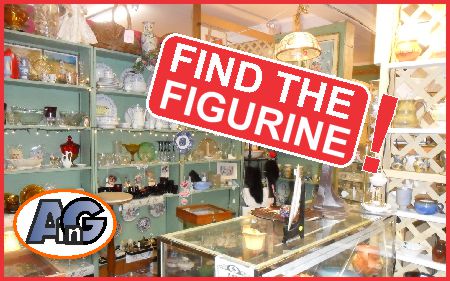
Gone are the days when intrepid collectors had to search antique stores and boutiques in remote villages in search of rare antiques. Now, literally, millions of vintage collectibles are available at the click of a mouse.
This has increased the supply of collectibles on the market, driving down their value. Additionally, the ease of selling collectibles online has led to more people selling their collections, further increasing the supply.
The Popularity of NFTs
NFTs have become increasingly popular in recent years, with many artists and musicians using them to sell their work directly to fans. These digital assets can take many forms, including digital art, music, videos, and even tweets. The value of NFTs is determined by supply and demand, with some selling for millions of dollars.
NFTs have also become popular in the world of gaming, with players able to collect and trade digital items within games. These items can include skins, weapons, and other virtual assets that can be used to enhance gameplay.
In conclusion, the rise of digital collectibles has contributed to the fall in the value of traditional collectibles since 2008-2009. NFTs have become increasingly popular in recent years, with many artists, musicians, and gamers using them to buy, sell, and trade digital assets.
Conclusion
In conclusion, the fall in the value of collectibles since 2008-2009 can be attributed to a variety of factors. Economic downturns, changes in consumer preferences, and oversaturation of the market are all potential causes. Additionally, the rise of digital media has shifted the focus away from physical objects and towards intangible experiences.
It is important to note that not all collectibles have experienced a decline in value. Some categories, such as rare coins and stamps, have remained relatively stable. However, it is clear that the collectibles market as a whole has undergone significant changes in the past decade.
Moving forward, collectors and investors should approach the market with caution and carefully consider their purchases. It is important to do research and stay up-to-date on market trends in order to make informed decisions. While the value of collectibles may fluctuate, the enjoyment and personal significance of owning them can remain constant.
Summary
It’s important to understand the circumstances that have impacted the value of collectibles, but it’s not all doom and gloom. Collecting remains a cherished hobby, and the market has its ups and downs. While values may have experienced a decline in recent years, it’s essential to focus on the joy and personal satisfaction that come from engaging in this passion.
Repairing
Remember that many vintage Swarovski crystal figurines come apart as the old glue fails. These can be restored to pristine condition by following the instructions in post by the Swarovski crystal repair experts from Artistry in Glass
Artistry in Glass: your source for antique repair in Tucson
Check out these informative articles:-
- Where can I get antiques repaired?
- Are broken antiques worth fixing?
- How to fix a broken picture frame
- How to repair a broken china plate
- How to repair a broken china teapot
- How to fix a broken marble slab
- How to repair a broken china coffee mug
- How to repair a 2000-year-old sculpture
- All about repairing stained-glass lampshades
- How to care for your stained glass skylight
- How to repair Dalle de Verre
- Is stained glass worth repairing?
- To repair or toss out?
- What to do with broken antiques
- Is lead crystal dangerous?
- Repairing an antique Mexican statue
- Repairing religious statues
- The history of Swarovski crystal figurines
- How to find the value of a Swarovski Crystal figurine
- Have Swarovski figurines lost value since 2009?
- How to collect Swarovski annual ornaments
- How to display Swarovski crystal figurines
- How to authenticate a Swarovski crystal figurine
- How to display Swarovski annual ornaments
- How to clean Swarovski crystal figurines
- How to repair a Swarovski crystal mouse
- How to repair a Swarovski annual ornament
- How to repair a Swarovski crystal train set
- Fixing broken wine glass stems
- How to clean cloudy glasses
- Why do wine glasses have stems?
- Swarovski Crystal Figurines
- How to repair a chip in a wine glass
- How to fix a scratched glass tabletop
- How to replace a broken patio tabletop
Generatecodeswar




